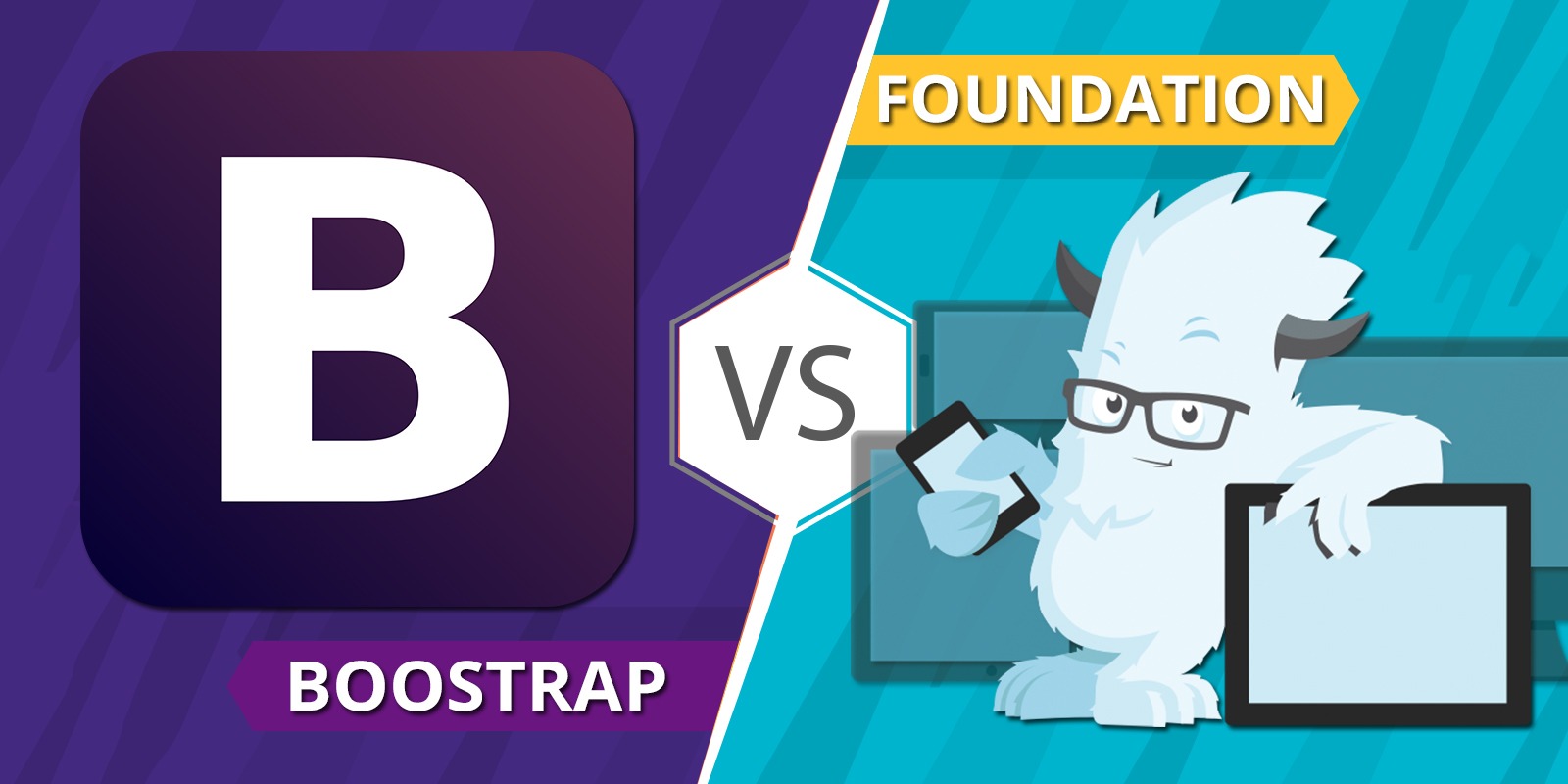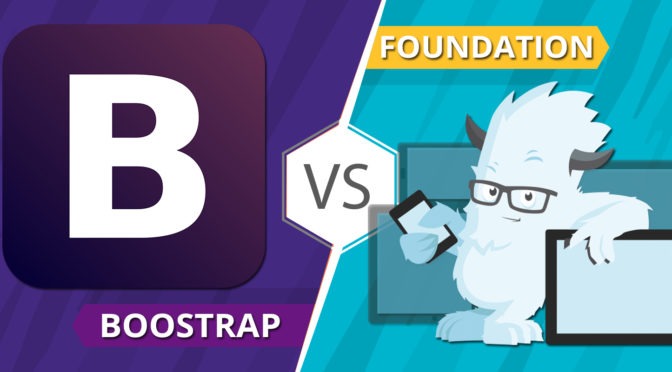Compare the Top Frameworks Bootstrap VS Foundation
About Framework: – A framework is simply a normal way of dealing with a familiar type of problem. In our case, in the planet of front-end development, it means making Cascaded Style Sheets (CSS) and JavaScript. It involves everything from managing to letter, push button, form fields, to rotators and mobile routing.
When it comes to being a developer and designer, you always reach an intersection of which CSS framework you must use? There are numerous out there to select from, but two of the most generally mentioned ones are Bootstrap and Foundation. In this article, we will compare the two CSS frameworks, Bootstrap vs. Foundation. By reading the following points about how using a framework can help speed up and update your development and design process.
What do you mean by CSS Framework?
Making a website or app sometimes can take a lot of time and development. A CSS framework normally uses by developers and designers as a device to increase the process. A CSS framework, also sometimes referred to as a front-end framework, is a package that makes up of predefined HTML, CSS, and JavaScript which must use when to begin to make out a project. With this, you don’t have to code from an empty slate each time you require to build a website or web application. In this, we are exclusively focusing on front-end frameworks which have to deal with what the companies observe.
A CSS framework consists of the following workings:
• HTML code which helps make up the formation of the pages.
• Typography method.
• CSS to visually change how components appear.
• JavaScript to change active elements such as drop-downs, mounting menus, etc.
• Receptive media question.
• Cross-browser compatibility fixes.
Benefits of Framework:-
1. Code Faster: – The complete end of a framework is to offer a periodic structure so that, as a developer, you can start your coding work efficiently and speedily.
2. Uniformity: – If you’re working with a group of members, a framework offers structure and consistency among projects. So you can easily switch projects, deliberate what naming principle to use, and what elements have access.
3. Solidity: – You don’t have to drag a group of third party scripts into your code (i.e. rotator) because those attributes are already involving within the framework itself.
Drawbacks of Framework:-
1. Modifications: – Sometimes necessitate lots of change to make it work, could end up the price you more time.
2. Documentation: – Necessitate documentation for alteration when updating.
3. Feature: – Lost a feature you require, in which you have to initiate another third party benefit.
4. Unnecessary code: – Possibly needless code for your perfect situation.
5. Collaborative: – Power makes teamwork harder.
Bootstrap: – It is the definite organizer among the available frameworks these days. Given its enormous recognition, which is still increasing every day, you must make sure that this astonishing toolkit fails you, or go away you alone on your way to construction successful websites. It formerly created by Mark Otto, a Twitter developer, as their method. In reality, it originally named Twitter Bootstrap, but within the past few years, drop the “Twitter” part. It is an open-source front-end framework consists of HTML, CSS, and JavaScript. It is modular base and has latest version 3 with fewer style sheets.
Though, with Bootstrap 4 they have switched over to the Sass CSS preprocessor. It bases on a 1,170px grid system which is an open layout. The first strength of Bootstrap is its tremendous reputation.
Officially, it’s not automatically better than the others on the list, but it provides many more resources than the other four frameworks collective. In short, Bootstrap is everywhere.
Foundation: – It is the second significant option in this comparison. With any solid company, this framework has a truthfully active well foundation. After all, Foundation uses on many large websites including Facebook, Mozilla, eBay, Yahoo, and National Geographic, etc. Foundation created by a company called Zurb. They use Foundation on every customer project to help them prototype quickly.
In 2011, they released their framework to the community as open source. Foundation is a truly proficient framework with business support, preparation, and consult accessible. It also offers many assets to help you learn and use the framework quicker and easier. It is open-source under the MIT license. It is modular base and consists of Sass stylesheets. It bases on a 940px grid system which is an open layout. Foundation also offers users with starter templates permit them to begin creating their web project even faster.
Comparison between them:-
1. The Grid System: – The most famous part of a front-end framework is the grid system. It’s the heart feature that enables designers and developers to quickly prototype layouts and makes rapid changes with confidence. Foundation always has a little ahead of the arc in this place; it is the first big framework to go quickly to respond and also the only great mobile-first framework for a period. On the other hand, Bootstrap also has these qualities in place now. The sentence structure for creating grids a little different, so this is a place where the individual preference may come into play, but it’s easy to make corresponding code snippets that do almost the correct same thing in both frameworks.
2. Sizing Units: – For manipulative widths, lettering, and other things, Bootstrap uses pixels and Foundation uses rims. There are practical differences between these two methods that are vital to understanding, but both are proficient of generating the same results. Pixels may be a little bit more well-known to graphic artists and new web designers, but some use the rim unit. For responsive deign use the rims for proportions.
3. Features and Components: – Both frameworks show to the very detailed list of pre-built elements, but some slight differences help you make the decision.
Foundation has built-in form confirmation through the stand. That’s not to say that Bootstrap not also have form confirmation, but for some, the pre-made Foundation solution may good head start. Foundation also contains substitution, which is a vigorous resolution for available images, although it may more than you require. Bootstrap isn’t moderately as feature-full, also feel like many of Bootstrap’s features are in a complete state. In other words, the defaulting look of Bootstrap elements appears more suited to speedily building a one-off website and accumulation a theme.







